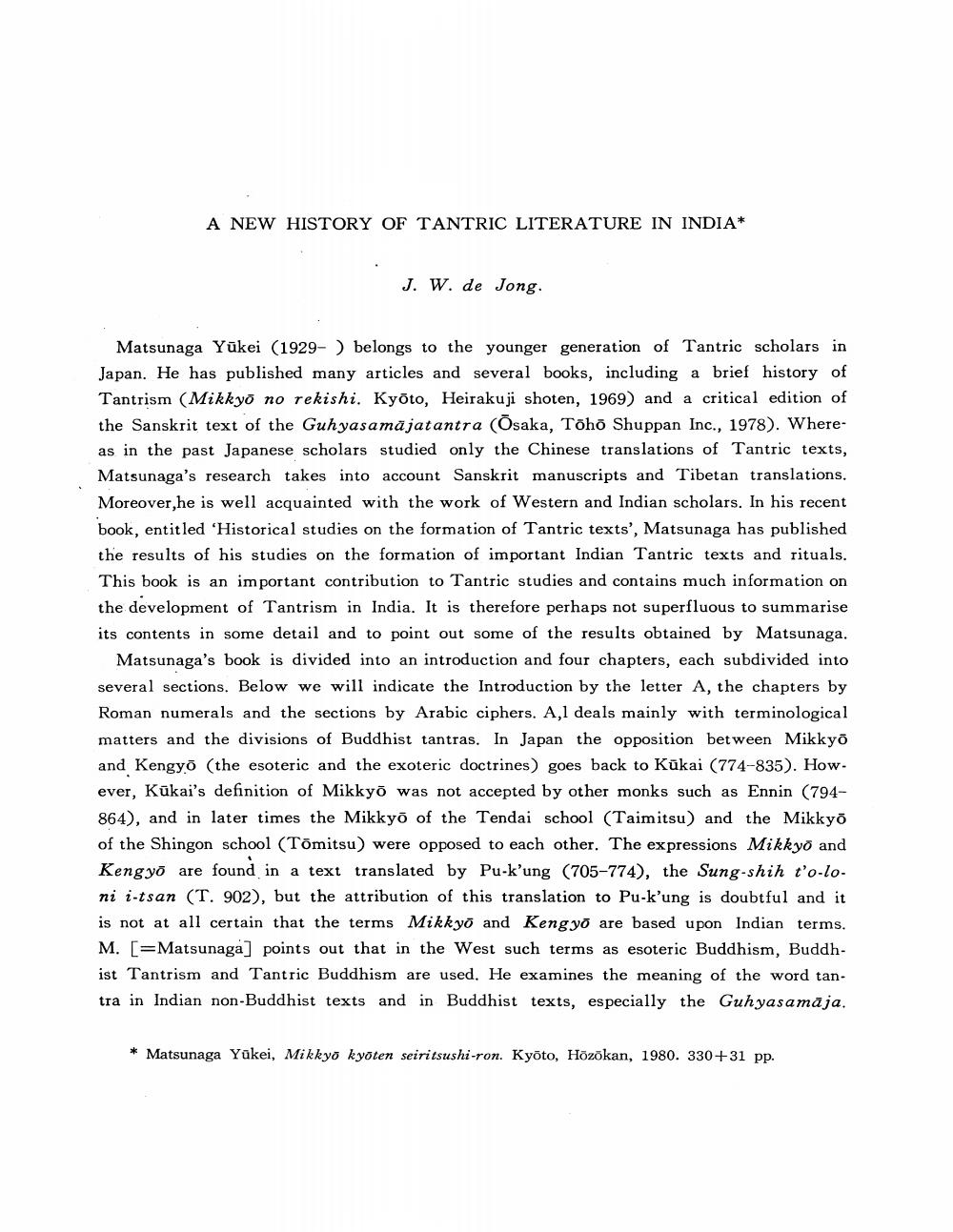Book Title: New History Of Tantric Lieterature In India Author(s): J W De Jong Publisher: J W De Jong View full book textPage 1
________________ A NEW HISTORY OF TANTRIC LITERATURE IN INDIA* J. W. de Jong Matsunaga Yūkei (1929- ) belongs to the younger generation of Tantric scholars in Japan. He has published many articles and several books, including a brief history of Tantrism (Mikkyo no rekishi, Kyoto, Heirakuji shoten, 1969) and a critical edition of the Sanskrit text of the Guh yasa mājatantra (Osaka, Tōho Shuppan Inc., 1978). Whereas in the past Japanese scholars studied only the Chinese translations of Tantric texts, Matsunaga's research takes into account Sanskrit manuscripts and Tibetan translations. Moreover,he is well acquainted with the work of Western and Indian scholars. In his recent book, entitled 'Historical studies on the formation of Tantric texts', Matsunaga has published the results of his studies on the formation of important Indian Tantric texts and rituals. This book is an important contribution to Tantric studies and contains much information on the development of Tantrism in India. It is therefore perhaps not superfluous to summarise its contents in some detail and to point out some of the results obtained by Matsunaga. Matsunaga's book is divided into an introduction and four chapters, each subdivided into several sections. Below we will indicate the Introduction by the letter A, the chapters by Roman numerals and the sections by Arabic ciphers. Al deals mainly with terminological matters and the divisions of Buddhist tantras. In Japan the opposition between Mikkyo and Kengyo (the esoteric and the exoteric doctrines) goes back to Kūkai (774-835). However, Kūkai's definition of Mikkyo was not accepted by other monks such as Ennin (794864), and in later times the Mikkyo of the Tendai school (Taimitsu) and the Mikkyo of the Shingon school (Tomitsu) were opposed to each other. The expressions Mikkyo and Kengyo are found in a text translated by Pu-k’ung (705-774), the Sung-shih t'o-loni i-tsan (T. 902), but the attribution of this translation to Pu-k’ung is doubtful and it is not at all certain that the terms Mikkyo and Keng yo are based upon Indian terms. M. [=Matsunaga] points out that in the West such terms as esoteric Buddhism, Buddhist Tantrism and Tantric Buddhism are used. He examines the meaning of the word tantra in Indian non-Buddhist texts and in Buddhist texts, especially the Guh yasamāja, * Matsunaga Yakei, Mikkyo kyoten seiritsushi-ron. Kyöto, Hözökan, 1980. 330+31 pp.Page Navigation
1 2 3 4 5 6 7 8 9 10 11 12 ... 23
